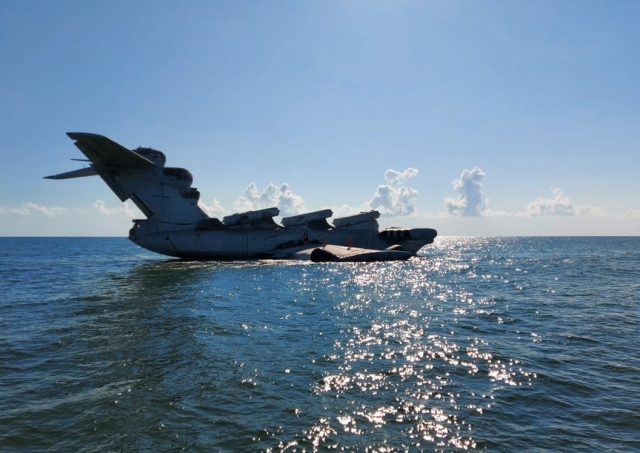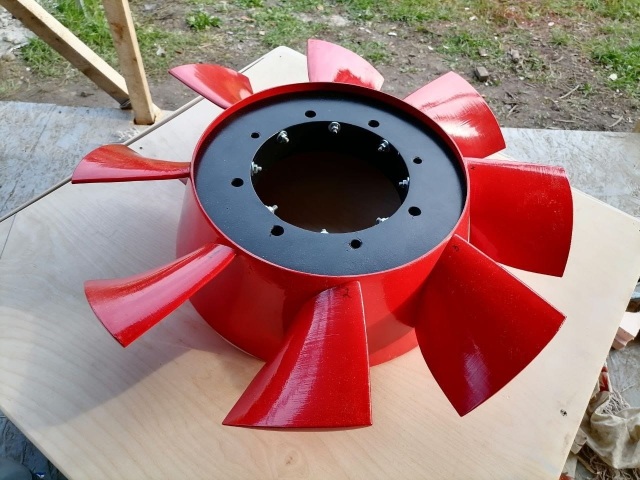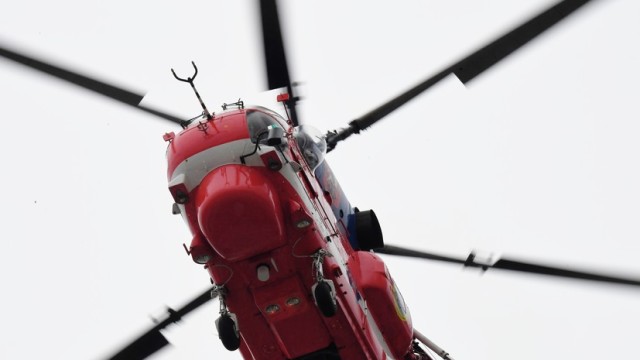MAI Design Engineer - on the method of improving the performance of aerodynamic surfaces "Balancing and controllability": MAI design engineer - about the method of improving the performance of aerodynamic surfaces
In Russia, a technique has been created to optimize the operation of aerodynamic surfaces, which will improve the characteristics of aircraft, propeller-driven aircraft engines and industrial fans. Andrey Luchkov, the chief developer of the algorithm, an engineer at the laboratory of the 4th research Department of the Department No. 101 of the Moscow Aviation Institute, told RT more about this in an interview. According to Luchkov, to date, thanks to this technique, a virtually new ventilation mechanism for Russian mines has been created, which is 15-30% more efficient than global samples.
— Andrey Nikolaevich, you have created a technique that can significantly improve the aerodynamics of many high-tech products. What is this algorithm? How can it be used in aviation?
— Our engineering team has developed a universal commercial methodology (algorithm) for optimizing the operation of aerodynamic surfaces. Its preliminary version was created within two months. The methodology was developed on the basis of optimization of the VME-6 shaft fan blades. In parallel with this, electronic models of prototype blades were made. Then the long-term stage of preparation of the production technology of pre-production samples and the process of passing their certification tests was launched.
In aviation, the adaptation of our algorithm makes it possible to improve the aerodynamics of aircraft wings. To date, we have finalized the methodology for improving the quality of the bearing surface for aircraft made according to the "flying wing" scheme.
Such aircraft lack the traditional horizontal tail fin. In Russia, this is a promising strategic stealth aircraft PAK DA, in the United States - Northrop B—2 Spirit, B-21 Raider bombers, in China — Xian H-20.
When using our algorithm, very high indicators of aerodynamics, balancing and controllability are simultaneously provided. Thus, an extremely important compromise is achieved in this segment of aviation technology.
I'll explain. Now, when creating an aircraft according to the "flying wing" scheme, designers have to make a difficult choice: if the aerodynamic performance is significantly improved, then the balancing and controllability of the aircraft deteriorate. For this reason, during the implementation of such projects, it is necessary to create a complex management system, which inevitably leads to an increase in financial costs and labor costs.
However, our team was able to obtain a unique technical solution for "flying wings". I believe that in the future it will open up a new operational horizon for this class of aircraft for both military and civilian purposes.
Our methodology can also be adapted to improve the air intakes that are installed on the sides of jet aircraft. The air intakes are designed to collect the required amount of air masses and maintain stable engine operation in all flight modes. The air intakes provide braking of the air flow, normalizing its pressure before entering the compressor of the power plant.
Thanks to our algorithm, it will be possible to ensure optimal characteristics of the air passage, taking into account the speed of the incoming flow and the pressure indicators inside the air intakes. Thus, we will be able to increase the stability of the modes of operation of aircraft engines, eliminate air flow disruptions that often occur.
There are prospects for improving the characteristics of propeller-driven aircraft groups. In particular, it is possible to optimize the operation of propellers for quadrocopters, airplanes and various helicopter-type vehicles. There are no restrictions on dimension and speeds here.
Let me remind you that in Russia, both civil and military vessels belong to the propeller-driven aircraft group: IL-112, Il-114, Il-20, An-24, An-26, Tu-95MS/Tu-95MSM, An-2 and the LMS-901 Baikal being created to replace it.
— Can your methodology be useful in shipbuilding?
— Yes, it is universal for all bearing surfaces. In shipbuilding, our algorithm may be required to improve hydrodynamics of hydrofoils. This type of high-speed water transport has been used for passenger transportation for several decades.
Our methodology will also be useful when creating ekranoplanes — multi-purpose vessels on a dynamic air cushion. These vehicles fly at a relatively low altitude from the water surface, accelerating up to hundreds of kilometers per hour. This mode of movement creates a screen effect when the incoming air flow increases the lift of the aircraft.
However, a serious problem of ekranoplanes is longitudinal instability — a physical phenomenon that occurs at the moment when, when changing the altitude of the flight, the center of the application of lifting force shifts in different directions. As a result, the nose of the ekranoplan may touch the water surface or, conversely, rise up too sharply.
 |
| Ekranoplan. |
| Source: RIA Novosti © Press Service of the Southern Military District |
Continuing the conversation about the universality of the methodology, I can say that it will also be in demand for railway transport. In particular, thanks to our algorithm, it is possible to optimize the aerodynamics of high-speed electric trains. Roughly speaking, the shape of vehicles will become more streamlined, contributing to less air resistance.
— What industrial product has resulted in the practical application of the methodology to date?
— One of the areas that we are actively developing now is improving the aerodynamic characteristics of industrial fans. The result of the work was an impeller (a system of blades operating in a closed circumference of the body), superior in characteristics to global samples in its class.
In the language of specialists of mine ventilation equipment, this product is called an impeller (drum) with blades that have a small span. The work was carried out on the basis of a local ventilation fan VME-6. It is used in mines, mines, tunnels and other polluted, dusty places with difficult working conditions. The customer gave it to us so that we take into account the conditions in which the impeller will function.
In the process of implementing the project, our team, in fact, created a new industrial fan, which is 15-30% more efficient than global samples. In addition, it is more economical in terms of energy consumption and has a low cost of production.
The fan developed by our team will be used to effectively purify the air from solid and gaseous harmful impurities. For mines, for example, it is required to purify the air from methane, dust and dirt that are formed during coal mining.
We have also developed several variants of impellers that meet the customer's requirements in terms of performance and manufacturing technology that he uses.
We acted in almost the same way with the blades to the impellers. Several variants have been developed and a product has been selected that is technologically more feasible.
At the same time, some of our prototypes turned out to be 75% better than those currently in operation. Another thing is that at the present stage it is difficult to launch them into mass production, since it is necessary to introduce specific technological processes. The classic technologies at most plants today are either steel bending or composite laying. For the manufacture of these products, they simply cannot be used.
After entering mass production of the impeller, our team plans to expand the range of blades of the VME, VO, BP series and start creating blades for large—scale main ventilation fans with a diameter of up to 2.5-3 m and with a more complex control system.
— It's no secret that explosions and heavy smoke continue to occur in modern mines. Unfortunately, tragedies happen periodically in our country. This is a major accident in Kuzbass at the Listvyazhnaya mine, which turned into human casualties, and a recent accident at the Osinnikovskaya mine. Can an impeller improve the safety situation in mines?
— Safety in mines consists of many factors, but the role of fans is certainly great, because, as I said above, they are responsible for cleaning the air, reducing the concentration of explosive methane.
Also, when the mine is flooded, the aerodynamic blades must function when partially submerged in water, which can break out of the rock. High-quality blades withstand very serious loads, creating traction in the most difficult conditions. Actually, this is exactly the line of samples we have created.
 |
| A prototype of the impeller created by the MAI engineering team. |
| Source: © Photo from the personal archive of the engineer of the 4th Research Institute of the Department No. 101 MAI Andrey Luchkov |
Reducing the probability of an explosion in the mine is one of the key objectives of our project. I note that explosion safety in the operation of mine fans of local ventilation is associated with the influence of static electricity. To neutralize it, most manufacturers cover the blades with special paint, but this is associated with certain costs.
Our engineers followed the path of proven technical aviation solutions — integrated a metal mesh into the composite design of the blades, which led to very significant savings. The effectiveness is obvious — the electrostatic tests were successfully passed the first time.
— Are there any plans to commercialize the technique of optimizing the operation of aerodynamic surfaces?
— In addition to fulfilling the obligations of the impeller to the customer, my plans are to create, together with my partner engineers, my own enterprise dealing with numerical modeling and the production of a wide range of technical products to order. It can be drones, impellers, and blades.
The basis of the company's team will be people who helped me a lot with the development of the methodology. This is a graduate of Samara State Aerospace University named after academician S.P. Korolev, one of the leading experts in the field of physics of aerohydrodynamics Anton Lyaskin, one of Russia's leading experts in the field of strength of aircraft structures Denis Kondratiev, a graduate of the Moscow Aviation Institute Denis Sukharev.
The engineering profession is both a science and an art that requires inspiration. Professional success in our business is not achieved by a mechanical search for solutions to problems. To create something more perfect, you need a special inner state.
Alexey Zakvasin


